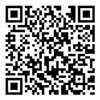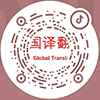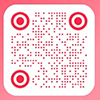Specific Solutions
Employee Handbook Translation
By Elite Translation
In today’s global and multilingual workplace, an employee handbook is more than just an internal HR document—it is a crucial tool for legal compliance, cultural integration, employee communication, and brand alignment.
Translating your employee handbook ensures that every team member—regardless of native language—understands company policies, expectations, and rights.
1. Why Translate Your Employee Handbook?
Companies often require translated handbooks when:
Hiring foreign employees or managing international teams
Operating overseas branches or subsidiaries
Undergoing global audits, compliance checks, or investor reviews
Enhancing transparency and inclusivity in a multilingual workforce
Employee handbook translation is not simply a matter of changing words between languages—it is conveying your corporate culture, expectations, and legal obligations across cultures.
2. What Does a Typical Employee Handbook Include?
An employee handbook usually covers:
Company values and culture
Code of conduct and workplace policies
Attendance, working hours, and compensation
Leave types and holiday arrangements
Health, safety, and data protection guidelines
Disciplinary actions, termination, and exit procedures
Confidentiality, non-compete clauses, and legal disclaimers
Such content combines HR, legal, and administrative language, and must be:
Accurately translated using legally accepted terms
Culturally adapted to fit the audience’s reading expectations
Clear, consistent, and professional in tone and structure
3. Common Languages for Translation
Based on hiring and expansion regions, popular language pairs include:
Chinese ⇄ English (most common)
Chinese ⇄ Korean / Japanese (for East Asia operations)
Chinese ⇄ French / German / Spanish (for EU markets)
Chinese ⇄ Vietnamese / Indonesian / Thai (for Southeast Asia)
Elite Translation offers multilingual delivery, ensuring consistency and alignment across all language versions of your handbook.
4. Our Translation Process
We take a professional, structured, and compliance-driven approach to employee handbook translation:
Project Consultation – We assess content, languages, formatting, and purpose
Qualified Linguists – Translators with HR, labor law, or compliance background
Terminology Management – Glossary development for internal consistency
Formatting & Layout – Matching the original style in Word/PDF/print-ready format
Multi-stage QA – Translation → Editing → Proofreading → Client review
Upon request, we can also provide certified translation, notarized statements, or company-stamped versions for official use.
5. Final Thoughts: Your Handbook Is More Than a Policy Document
A well-translated employee handbook reflects your company’s professionalism, inclusiveness, and legal awareness. It helps:
Prevent misunderstandings or misinterpretations
Reduce employment-related legal risks
Build trust with international staff
Align company values across borders
At Elite Translation, we specialize in HR and corporate document translation, including employee handbooks, HR policies, codes of conduct, onboarding manuals, and training materials.
Let us help you communicate your company’s values and policies—clearly, legally, and across cultures.


















